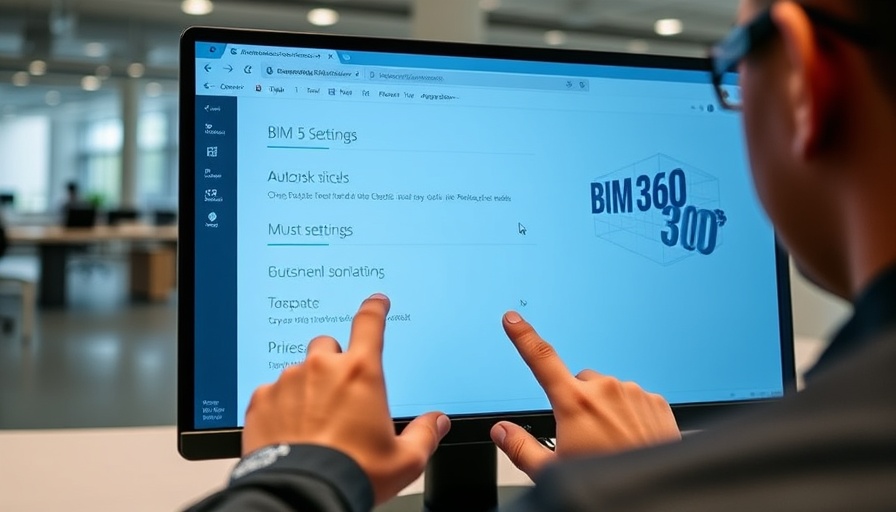
The Transformation of Design: From 2D to Cloud-Connected Models
Imagine a world where designs move seamlessly from concept to construction, uniting teams across different locations and disciplines. The evolution from simple 2D CAD designs to sophisticated 3D models has already changed our approach to architecture and engineering. But as we embrace this new era of cloud-connected data, we're entering a realm beyond just enhanced visualizations. This connectivity, especially through tools like Building Information Modeling (BIM) and platforms such as BIM 360, is revolutionizing how projects are managed and executed.
Building Connections: The Power of Cloud Technology
With cloud technology at the forefront, collaboration becomes the new foundation of successful project delivery. Using Autodesk's Revit and BIM 360 software, professionals can integrate design and construction workflows that were once separate, allowing for a holistic view that eliminates many hurdles traditional processes presented. This means optimizing not just the aesthetic function of designs but also ensuring they are practical and executable in real-world contexts.
What’s Next? The Future of Cloud-Connected Design and Construction
As production becomes increasingly interconnected, predicting future trends is essential. The principles of cloud technology promise enhanced efficiency through real-time updates and automated data management. This evolution in practice might also lead designers and builders to develop custom applications using Autodesk Forge, enabling them to tailor their workflows more precisely. By leveraging these advanced technologies, teams can dramatically reduce errors, stay within budget, and finish projects on time.
Community Bonds through Innovative Workflows
Local builders and architects are not just learning these tools; they are using them to create spaces that resonate with their unique communities. MEP engineers and civil contractors are discovering that cloud-connected solutions enable them to work closer together, fostering stronger relationships. These new workflows facilitate better communication, allowing for a sharing of ideas that ultimately benefit the entire community.
Celebrating Shared Success: Real Stories Behind the Data
Consider the stories of local businesses adapting to this digital transformation. One small architectural firm in our community recently completed a large civic project. Using BIM 360, they collaborated with various stakeholders, resulting in innovative designs that accurately reflected community needs. Their success story is a testament to how connecting design with cloud technology can stimulate local economies and invigorate community spirit.
Join the Movement: Embrace Cloud-Connected Construction
As we shift toward these sophisticated workflows, it’s crucial for professionals in the field to embrace this change. By implementing cloud-based solutions, architects, engineers, and contractors can not only enhance their projects but also contribute to a more connected, engaged community.
 Add Row
Add Row  Add
Add 




Write A Comment